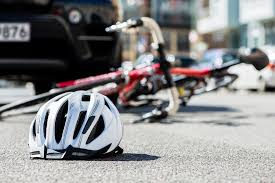 As the spring season approaches so do the outside activities. The warm weather allows us to resume activities the cold weather is not welcoming to. Many individuals like to take a bicycle rides with a friend, significant other, or they like to take the opportunity to teach their kids how to ride a bike. It’s a great hobby to enjoy with others, but when one decides to take routes that involve motor vehicles the bike ride can become more susceptible to collision. Therefore, a bike rider must know certain laws and rules when one decides to encounter routes with cars.
As the spring season approaches so do the outside activities. The warm weather allows us to resume activities the cold weather is not welcoming to. Many individuals like to take a bicycle rides with a friend, significant other, or they like to take the opportunity to teach their kids how to ride a bike. It’s a great hobby to enjoy with others, but when one decides to take routes that involve motor vehicles the bike ride can become more susceptible to collision. Therefore, a bike rider must know certain laws and rules when one decides to encounter routes with cars.
What are the bike laws in Texas?
Bicycles are viewed as the same as vehicles, which means they have to abide by the same laws car drivers do. Generally, some of the laws state:
1. The bike rider has to ride on the farthest right side of the road near the curb.
2. The rider has to use their arms to signify when the rider wants to turn.
3. The rider needs to have a red reflector or light on the rear of the bike during the nighttime.
For reference to these laws, you may use the Texas Transportation Code specifically under chapter 551.
Since bicycles do not have the protection that cars do, bike riders are likely to sustain injuries from the impact. When a bike rider experiences this trauma, the rider may desire to sue the motorist to collect damages for the harm they incurred. An injured bicyclist can sue the negligent driver and the city if bad road conditions were a cause in the accident. The statute of limitations to bring a lawsuit is 2 years starting from the date of accident to file a personal injury lawsuit. If the injured party wishes to sue the city, the statute of limitations is six months from the time of the accident.
In some situations, the bicyclist and the motorist may both be liable for the accident. Texas is a modified comparative fault state. In other words, in this scenario, if the bicyclist is partially responsible for the accident, the bicyclist’s damages are reduced by the bicyclist’s percentage of fault. Also, if the bicyclist’s percentage of fault is more than 50%, then he or she will be barred from collecting any damages for the accident.
For example, if the court finds that the motorist is 60% at fault and you, the bicyclist, is 40% at fault, the bicyclist can only collect 60% of the total amount of damages.
If you have experienced a bicycle accident caused by a negligent motorist, it is crucial to contact a skilled attorney like Eric Reyes to represent you. Eric Reyes has been a practicing attorney in the area of personal injury for 30 years. His litigation team has been with him for 20+ years, so he and his team work well and efficiently to get a result for the case. Throughout his time focusing on personal injury law, he has met the requirements to be a Board Certified Attorney in Personal Injury Trial Law and Civil Law. His knowledge of personal injury can help you determine the best way to resolve your matter. Please give our office a call at (817) 332-1522 for further information.
 Fort Worth Injury Attorney Blog
Fort Worth Injury Attorney Blog

